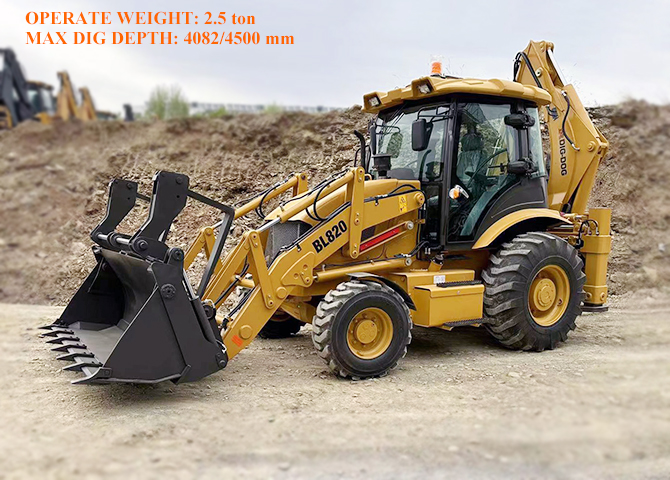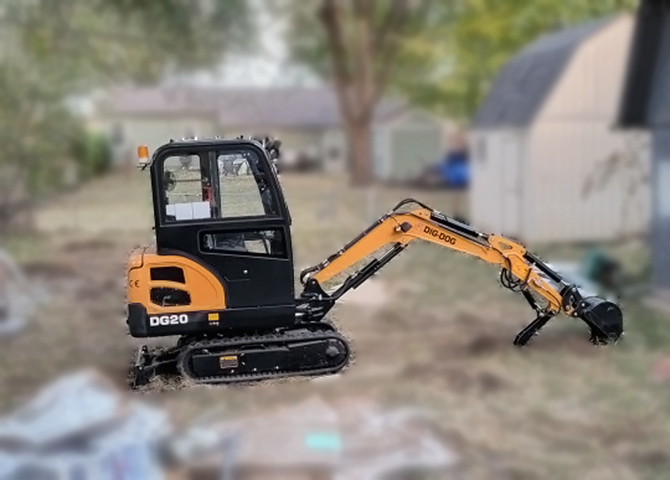Because of its versatility and relative ease of use, small excavator is a very popular equipment in the construction site. This ingenious machine can be used for small disassembly jobs, digging holes, snow removal and more. So, what is the best way to operate a small excavator? How do you get started? Read on to learn more.
Before we get started
There is no doubt that before using any heavy machinery, thorough training is required from a trained professional who is qualified to provide this certificate. This training is essential for all workers who will operate small excavators, and this training needs to be updated regularly to ensure safety and good operation. The guidelines below are our top tips and should not be used in isolation without proper qualifications.
10 Tips for operating a mini excavator
1. Plan ahead
When you get your training certificate, you may be eager to use the excavator and get to work. However, it is a good idea to plan the work thoroughly before starting any project. This ensures that errors are avoided and fuel is saved because you plan the most efficient course of action and all workers are aware of the task at hand.
2. Select the attachment carefully
Mini diggers can be equipped with accessories for various purposes. Make sure you know what attachments to use in each scenario and prepare appropriate attachments for your planned project to ensure a successful outcome.
3. Check your machine
It is important to check the machine before use, this includes visual inspection to make sure everything looks like it should, such as rails, fuselage, to make sure there are no final drive leaks, and also to make sure oil, lubricating oil and coolant are all at the right level.
4. Test it Out
After you have checked your machine and installed the correct accessories in place, it is a good idea to test the balance of the excavator on flat ground to avoid accidents and errors before committing to the project.
5. Make sure your workspace is level
Wherever you use your mini excavator, you need to make sure the tracks are on solid ground and level surfaces. Before you start digging, take some time to carefully observe the area you plan to dig so you can plan how to approach it in the safest way. Without careful planning and consideration, if you don't consider ground conditions first, you run the risk of a mini digger tipping over.
6. Keep your team simple
When using excavators, it is necessary to fully explain everyone on site first to ensure efficient work and safe working space. The area around the small excavator needs to be far away from personnel and obstacles, and the excavator must not be operated near the place where it may be in contact with people. Drafted plans and timelines can help with this, so that everyone knows where they need to be, when, and exactly what needs to be achieved within that time frame.
7. Take regular breaks
Operating heavy machinery is tiring, and fatigue can lead to errors and safety loopholes. Therefore, it is very important that whoever is operating the mini excavator take regular breaks to avoid this situation. This will help maintain the health and well-being of your employees, maintain a safe work environment, and ensure that fatigue does not set in.
See also: Importance of establishing a robust logistics plan in construction management
8. Be consistent with your surroundings
In this article, careful planning has been reinforced, which is a basic task before starting any excavation work. However, this does not mean that you should turn off the flash while performing the work itself. Whenever small excavators are used, operators must constantly consider their environment and any potential hazards that need to be observed during operation. Make sure the mirror is checked frequently and that you're always in tune with what's going on around you.
9. Take advantage of the automatic idle function
Many small excavators have an automatic idle function, which starts when the machine has not been used for a certain period of time. This is an excellent feature that both saves fuel and reduces overuse of machines when it is not needed. Make sure that all operators are aware of this automatic feature and know how to enable it.
10. Perform periodic maintenance
Keep your mini digger in tip-top shape, and by stepping up routine maintenance, keep all your employees on track. This requires lubricating the machine after each use, checking the oil level regularly, cleaning the machine, checking the air filters regularly, and ensuring that all electrical equipment is working efficiently. The final drive motor in your mini excavator will last for many years, but will need to be replaced at some point to find out more wonders. This is the final drive motor in the mini excavator here.
With these 10 tips for operating your mini excavator, you're sure to have a smooth ride!
 How To Choose The Right Compact Wheel Loader
How To Choose The Right Compact Wheel Loader
 How Much Does a Forklift Weigh?
How Much Does a Forklift Weigh?
 How Much Does a Backhoe Weigh
How Much Does a Backhoe Weigh
 How Much Does a Mini Excavator Weigh
How Much Does a Mini Excavator Weigh